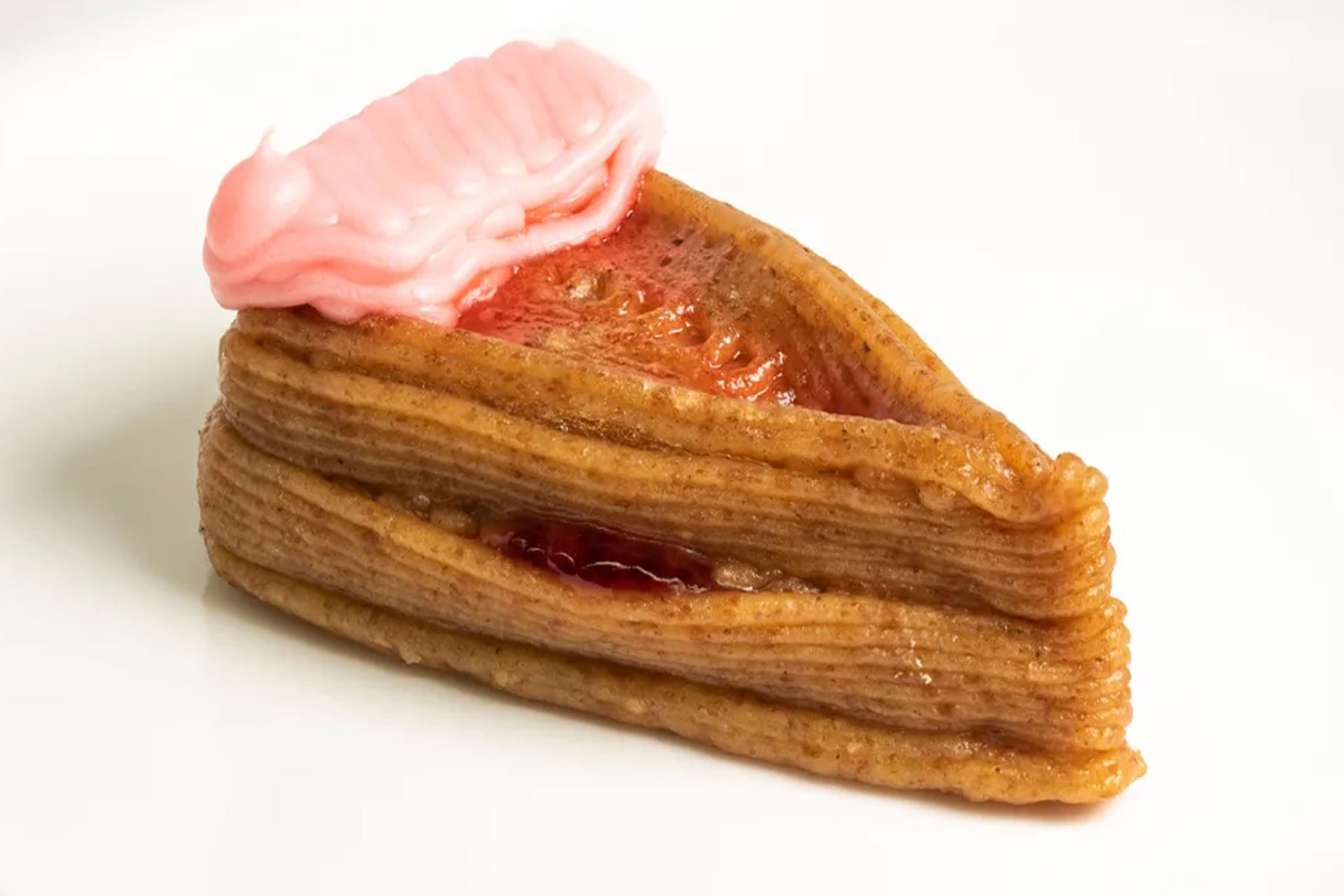3D Printing in the Food Industry: A Simple Guide

In the dynamic intersection of technology and gastronomy, 3D printing in the food industry stands as a beacon of innovation. Beyond its origins in crafting plastic trinkets, this cutting-edge technology has seamlessly integrated into our kitchens, reshaping how we approach and experience food. In this straightforward guide, we’ll delve into the basics and uncover the magic behind how 3D printing is revolutionizing the culinary landscape.
On This Page
- Understanding 3D Printing in the Food Industry
- Benefits of 3D Printing in the Food Industry
- Applications of 3D Printing in the Food Industry
- Challenges and Considerations
- The Future of 3D Printing in the Food Industry
Understanding 3D Printing in the Food Industry
Before we dive into how 3D printing benefits the food industry, let’s first have a quick look at what this technology is all about and how it works.
What is 3D Printing in the Food Industry?
In a nutshell, 3D printing is a process of creating three-dimensional objects by layering material on top of itself. In the food industry, this material is often edible and can range from chocolate to dough.
How Does it Work?
The printer interprets the model layer by layer, depositing the edible material according to the specifications. Unlike the usual 3D printing process, which commonly uses materials like plastic or metal, 3D printing in the food industry utilizes edible materials. These can range from familiar ingredients like chocolate, sugar, and dough to more unconventional choices such as fruit and vegetable purees. The selection of material depends on the desired end product and its intended taste and texture. Imagine your favorite dessert materializing before your eyes, layer by scrumptious layer!
How Long Does it Take to 3D-Print Food?
The duration of the printing process can vary based on factors such as the complexity of the design, the type of edible material used, and the size of the final printed item. But normally, a simple design will take 7 minutes to finish, while for the more complex designs, it can take more than 45 minutes for each product to finish.
Benefits of 3D Printing in the Food Industry
1. More Options for Customization
One of the standout advantages of 3D printing in the food industry is the ability to customize dishes. From intricate cake decorations to personalized pasta shapes, the possibilities are endless! This level of customization allows chefs or cooks to unleash their creativity and gives customers a unique dining experience.
2. Efficient Production
Traditional cooking methods often involve time-consuming processes. But with the use of a 3D printer, it streamlines food production by automating intricate tasks – particularly for restaurants and catering services, as it allows for prompt delivery without any compromise on quality.
3. Reduced Food Waste
One of the known benefits of 3D printing is its capability to reduce waste, which can be handy for the food industry since it means there will be less waste as the ingredients will be properly utilized because of the precise ingredient measurements. Traditional cooking often results in excess ingredients that may go unused, but with 3D printing, you can print exactly what you need. This not only saves money, but also contributes to a more sustainable kitchen.
Applications of 3D Printing in the Food Industry
1. Culinary Artistry
Chefs are using 3D printing to push the boundaries of culinary artistry. Imagine enjoying a meal where every element is a masterpiece in itself. From geometrically perfect appetizers to intricately designed desserts, 3D printing allows chefs to create edible works of art.
2. Personalized Nutrition
For individuals with specific dietary requirements, 3D printing offers a lifeline. Customized meals tailored to individual nutritional needs can be easily created, ensuring that everyone can enjoy a delicious and healthy dining experience.
3. Food Shapes Beyond Imagination
Gone are the days of conventional cookie shapes. 3D printing enables the creation of intricate and unique designs that were once thought impossible. From dinosaur-shaped gummies to personalized pasta shapes, this technology adds a touch of whimsy to the dining table.
Challenges and Considerations
1. Texture and Taste
While 3D printing opens up a world of culinary possibilities, ensuring the desired texture and taste can still present some challenges. Chefs and food scientists are continuously working to refine the process and find the perfect balance between aesthetics and flavor.
2. Cost
As with any cutting-edge technology, the initial investment in 3D printing equipment can be significant. However, as the technology advances and becomes more widespread, costs are likely to decrease, making it more accessible to a broader range of culinary enthusiasts.
The Future of 3D Printing in the Food Industry
The journey of 3D printing in the food industry is just beginning. As technology continues to evolve, we can expect even more exciting developments. From enhanced printing materials to faster and more precise printers, the future looks promising for those eager to explore the intersection of technology and cuisine.
Indeed, having this kind of innovation in the food industry is a tremendous help as it offers unprecedented levels of customization, efficiency, and creativity. While it comes with its challenges, the potential benefits are too enticing to ignore.
Looking for quality 3D printing in the Philippines? Contact us today to learn more about our products!


